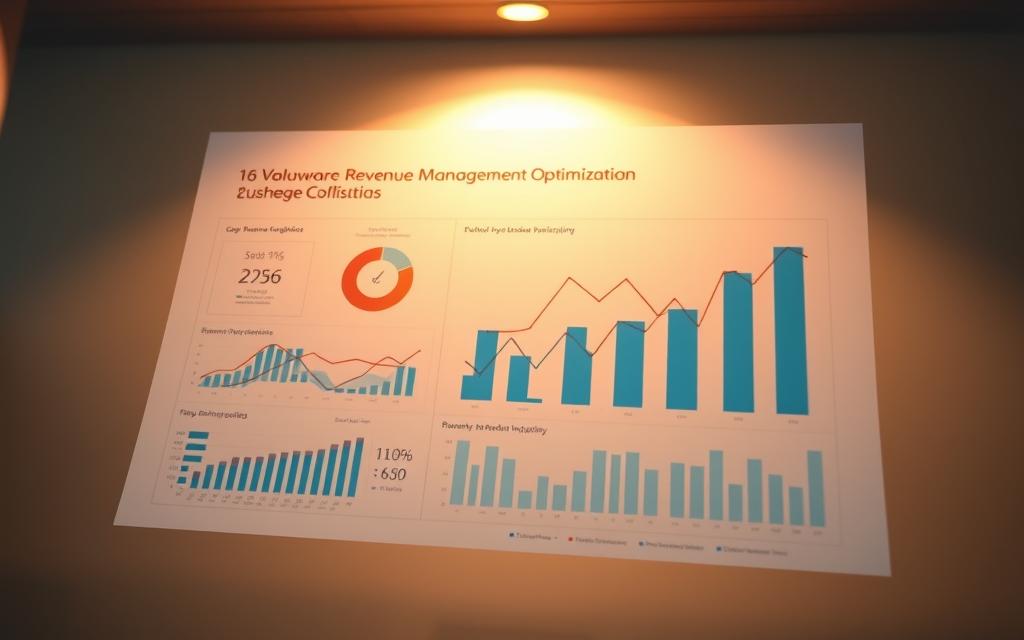Businesses are always looking for ways to increase their earnings and stay competitive. One key strategy is revenue management optimization. This involves looking at pricing and inventory to get the most revenue possible.
Using revenue management optimization, companies can make smart choices based on data. This helps them grow and stay profitable. It lets them adapt to market changes, grab new chances, and keep ahead of rivals.
To do revenue management optimization well, you need to know the market, customer habits, and where your money comes from. With this knowledge, businesses can create plans to increase earnings and succeed over time.
Understanding Revenue Management Optimization
Revenue management optimization is key for businesses wanting to boost their earnings. It uses data and smart pricing to improve financial health.
Definition and Core Principles
It’s about making the most of pricing and inventory to increase revenue. This means knowing what customers want, market trends, and what competitors do.
The main ideas include using data, changing prices often, and focusing on customers. These help businesses set better prices and earn more.

The Business Value of Strategic Pricing
Strategic pricing is vital for revenue management. It lets businesses adapt to market changes and customer needs. With dynamic pricing, they can change prices quickly to make more money and stay ahead.
Good strategic pricing also means knowing how price changes affect demand. This helps businesses make smart price moves. It can lead to more earnings and better profits, helping businesses grow and succeed.
Key Benefits of Implementing Revenue Management Strategies
Revenue management is key for businesses wanting to boost their finances. By using smart revenue management, companies can see big gains in their earnings. This makes them more competitive too.
Maximizing Profit Margins and Resource Utilization
Revenue management helps businesses make more money. It lets them set prices based on demand, which boosts earnings. It also makes sure resources are used well, meeting demand without waste.
Gaining Competitive Advantage Through Data-Driven Decisions
Using revenue management, businesses can make choices based on data. This gives them an edge over rivals. With advanced analytics, they can set prices that work best for their market position.
Improving Customer Segmentation and Targeting
Revenue management also helps in understanding and reaching customers better. By studying what customers like, businesses can create marketing and pricing that speaks to them. This builds stronger customer relationships and loyalty.
Essential Revenue Management Optimization Techniques
In today’s market, knowing how to manage revenue is key for growth. Companies that get this right can boost their profits and stay ahead. It’s all about using data, understanding the market, and making smart choices.
Dynamic Pricing Models and Implementation
Dynamic pricing is a big part of managing revenue well. It means changing prices based on demand and competition. This way, businesses can make more money when it’s busy and encourage sales when it’s slow.
But, it needs advanced analytics and a good grasp of the market.
Demand Forecasting and Predictive Analytics
Knowing what customers will want is crucial. By predicting demand, companies can set prices, manage stock, and plan better. Tools for predictive analytics help by looking at past data and trends.
Technology Tools for Effective Revenue Management
Technology is a must for managing revenue today. Special software lets businesses analyze data, adjust prices automatically, and optimize earnings. It keeps them quick to respond to market changes.
By using these techniques, companies can see big gains in revenue and profits. The secret is to stay flexible and keep improving based on what works and what doesn’t.
Integrating Marketing Effectiveness with Revenue Management
In today’s market, combining effectiveness marketing and revenue management is key. Companies that do this well can boost their earnings a lot.
Aligning Marketing Campaigns with Revenue Goals
Linking marketing campaigns with revenue goals is vital. It means setting clear, measurable targets for marketing. This way, businesses make sure their marketing pays off.
To align well, you need to know your customers, market trends, and competitors. Also, using advanced analytics is crucial for tracking and making smart decisions.
Measuring Marketing ROI in Revenue Optimization
It’s important to measure marketing ROI to see its impact on revenue. You should track things like conversion rates and customer lifetime value.
By knowing which marketing works best, you can spend your budget wisely. This makes your marketing more efficient and helps your revenue grow.
Creating Synergy Between Marketing and Revenue Teams
Marketing and revenue teams need to work together for success. When they do, they create marketing that really speaks to people and brings in money.
This teamwork comes from talking often, sharing goals, and understanding customer needs. Together, they find new ways to grow and make the business more profitable.
Conclusion: Building a Sustainable Revenue Management Framework
Maximizing profit margins is key for businesses to stay ahead. Understanding revenue management and using smart pricing helps. This way, companies can make choices based on data to grow their revenue.
A good revenue management plan links marketing with revenue goals. It measures how well marketing works. This teamwork helps businesses adapt to market changes and customer needs.
Using dynamic pricing and predictive analytics helps optimize revenue. It also improves how businesses segment their customers. As the market changes, focusing on revenue management is crucial for long-term success.






